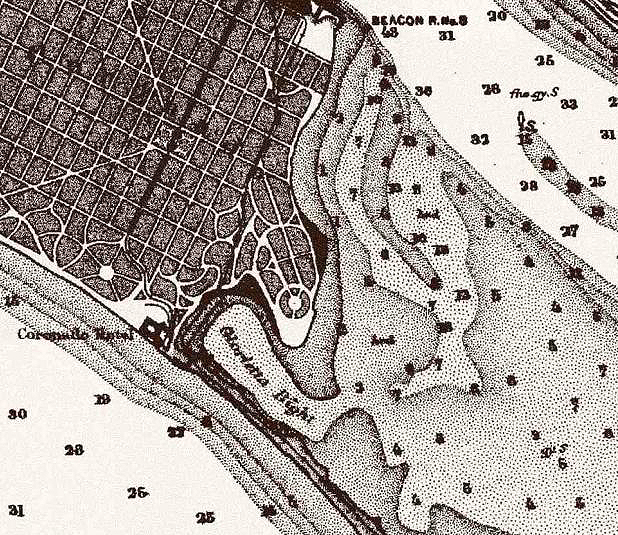 Another in a regular series of fascinating, intriguing, or thoughtful tales about people and places in Nado history — presented by your Coronado Historical Association
Another in a regular series of fascinating, intriguing, or thoughtful tales about people and places in Nado history — presented by your Coronado Historical Association
Where in the world is “Glorietta Bight?”
Let’s go back to the days of a sandy, scrubby, little-developed Coronado where the sight of low-tide mud banks and the effervescent smell of fishy goo dominated our shore along the bay.
“Glorietta Bight” was Glorietta Bay’s first name, an indication of its extreme shallowness — so shallow that the builders of the Hotel del Coronado chose to transport the hotel’s heavy lumber all the way across the island from First Street rather than barge building materials to a more efficient pier next to the building site.
Beginning shortly after the Coronado Boathouse’s construction in 1887, the hotel organized the “Coronado Boating Club” to promote its recreational services in Glorietta Bight. The hotel’s first boats were a shallow-draft, paddling boats known as “swanboats,” but the hotel also bought 12 small sailboats for its Boathouse. Unfortunately, these boats would lie high and dry at their moorings during low tide a sad sight for the developers of the Hotel Del who had envisioned festive boating, races, or picnic suppers on the bay for its guests.
In 1888, the Coronado Beach Company dredged a 1o-foot deep channel through Glorietta Bight that included a circular turning-basin near the Boathouse. This was real progress. Not only could boats actually use the Boathouse high tide or no what a concept! but the spoil from dredging could be deposited ashore to better shape the shoreline.
The future Tent City area south of the hotel was widened and a sea wall begun while extra dredge material was laid along the bluffs of what is today Glorietta Boulevard to provide a smooth run of dry land for the railroad line down Pomona.
Thus, with the coming of development and the realization of a real vision for Coronado recreational boating, a Bight became a Bay. (BL)
Photos courtesy of the Coronado Historical Association.





